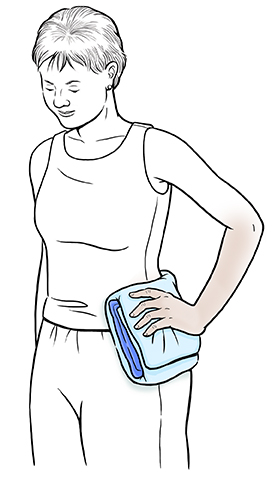A bruise (contusion) happens when small blood vessels break open and leak blood into the nearby area. A hip bruise can result from a bump, hit, or fall. Symptoms of a bruise often include changes in skin color, swelling, and pain. It may take several hours for a deep bruise to show up. If the injury is severe, you may need an X-ray to check for broken bones. Swelling should decrease in a few days. Bruising and pain may take several weeks to go away.
Home care
-
Unless another medicine was prescribed, you can take acetaminophen, ibuprofen, or naproxen to help relieve pain and swelling. If needed, stronger pain medicines may be prescribed. Take all medicines as directed by your health care provider.
-
Ice the bruised area to help reduce pain and swelling. To make an ice pack, place ice cubes in a plastic bag that seals at the top. Wrap the bag in a thin towel. On the first day, apply the cold pack to the bruised area for 20 minutes every 1 to 2 hours. Then, use an ice pack 3 or 4 times a day until the pain and swelling go away.
-
If walking causes pain, use crutches or a walker until you can walk without pain. These items can be rented at most drugstores and medical or orthopedic supply stores.
-
If your injury is keeping you from moving around or caring for yourself correctly, you may qualify for services, such as home health care. Check with your health care provider and insurance company to see if this type of care is covered by your plan.
Follow-up
Follow up with your health care provider as advised.
When to get medical care
Contact your health care provider right away if you have:
-
Increased pain, bruising, or swelling near the injured area.
-
Decreased ability to bear weight on the injured side.
-
Pain or swelling that develops below the knee.
-
Chest pain or shortness of breath.


